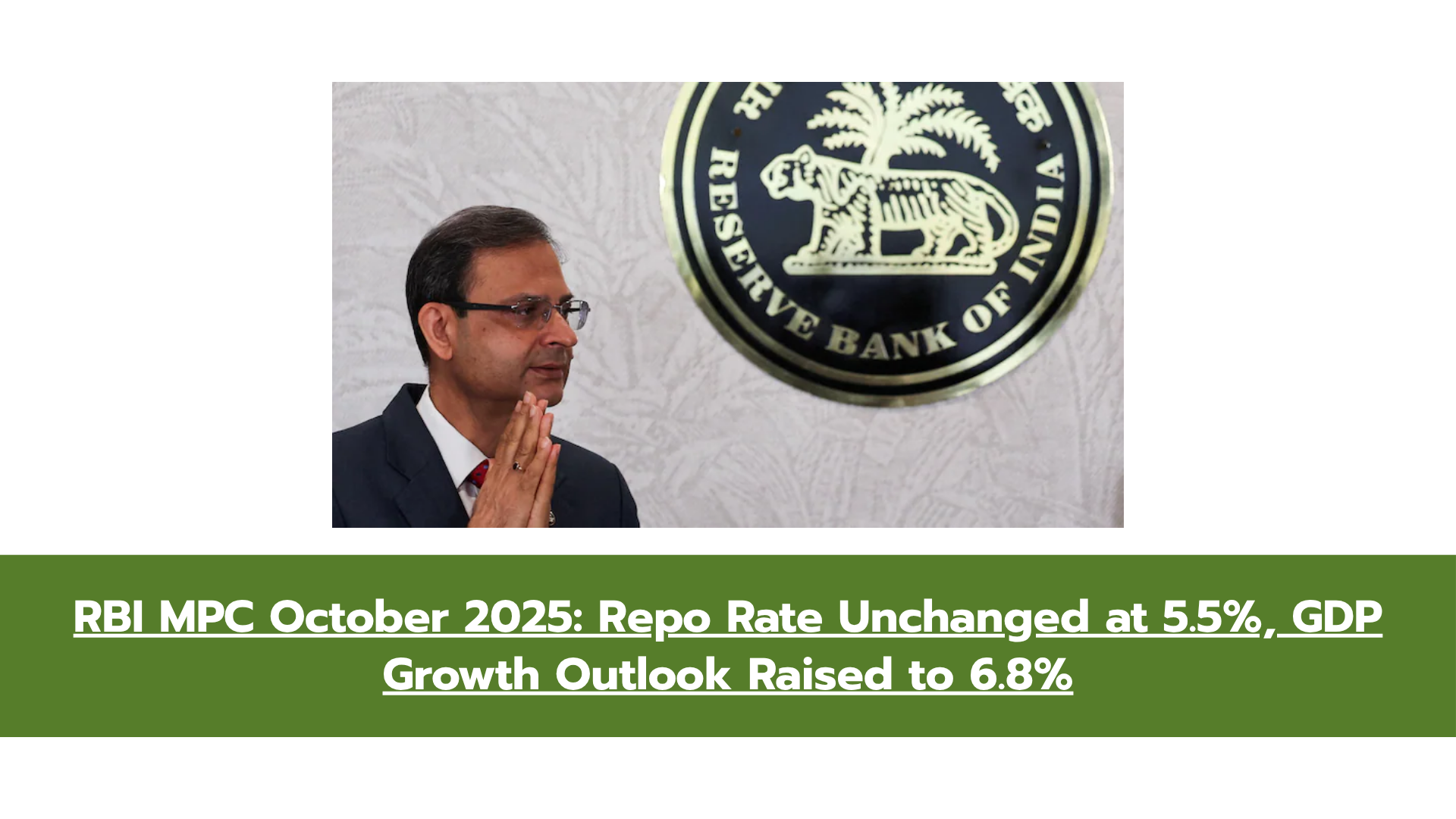The Reserve Bank of India (RBI) announced its latest Monetary Policy update on October 1, 2025, keeping the repo rate unchanged at 5.5% for the second time in a row. The decision was widely expected as inflation remains under control and the central bank wants to carefully assess the impact of previous rate cuts and recent GST changes.
What is Repo Rate and Why it Matters
Repo rate is the rate at which RBI lends money to commercial banks. When repo rate is reduced, banks can borrow cheaper, which means loans for home, car, and personal needs also become cheaper. When it goes up, EMIs increase.
By keeping the repo rate stable at 5.5%, RBI has sent a clear message – there is no immediate pressure on borrowers, but the central bank is keeping a close eye on inflation and growth trends.
RBI’s Stand on Inflation
India’s inflation has cooled down sharply in recent months. The Consumer Price Index (CPI) fell to 2.07% in August, which is the lowest in six years and almost at the bottom of RBI’s tolerance band of 2-6%.
RBI Governor Sanjay Malhotra said that lower food prices and GST rationalisation are supporting this decline. However, global trade tariffs and supply chain issues remain a risk for the coming months.
Impact on GDP Growth
The RBI has revised India’s FY26 GDP growth forecast upward to 6.8%, compared to the earlier projection of 6.5%. This positive outlook comes after India’s economy grew 7.8% in the April-June quarter of this year, surprising many analysts.
According to experts, stable interest rates and reduced consumer taxes will encourage spending and investment, while external challenges like US tariffs could affect exports.
What This Means for Borrowers
For people already paying EMIs on home loans, car loans, or personal loans, the unchanged repo rate is a relief.
- Home Loan Borrowers: No immediate change in EMI, but future adjustments will depend on RBI’s upcoming decisions.
- Car and Personal Loan Borrowers: Fixed-rate borrowers remain unaffected, while floating-rate borrowers will see stability for now.
- New Borrowers: Loan costs remain the same as previous months, so this is a good time to plan financing.
Impact on Depositors
Fixed Deposit (FD) and Recurring Deposit (RD) rates are likely to remain stable. Some banks may still increase deposit rates slightly to attract more funds. This is positive for senior citizens and savers who prefer safe investments.
Effect on Markets and Economy
- Stock Market: Investors usually welcome stability, and unchanged repo rates reduce uncertainty.
- Real Estate: Affordable borrowing means steady housing demand.
- Consumers: Stable EMIs help families manage their monthly budgets without extra financial stress.
Expert Suggestions for Borrowers
- Prefer floating-rate loans as rates are currently stable.
- Use prepayment options whenever extra income is available to reduce long-term interest burden.
- Compare fixed vs floating loans based on your risk preference.
- Consider loan transfer if another bank is offering better terms.
Conclusion
The RBI’s October 2025 policy update has brought relief to both borrowers and depositors by keeping the repo rate steady at 5.5%. With inflation under control and growth projections improving, the central bank has chosen a “wait and watch” strategy. For now, EMIs remain stable, deposits continue to earn steady returns, and the Indian economy looks set to maintain its growth momentum.
FAQs
What is the current repo rate?
The repo rate stands at 5.5%, unchanged from the last policy meeting.
Why did RBI keep the repo rate unchanged?
RBI wants to monitor the impact of previous rate cuts and GST changes, while also being cautious about global trade tensions.
How does this affect home loan EMIs?
Existing borrowers will not see any increase in EMIs for now. Future EMIs may change if RBI revises rates in the coming months.
What is RBI’s GDP growth forecast for FY26?
The central bank has raised the GDP growth forecast to 6.8% from the earlier estimate of 6.5%.
Will depositors benefit from this decision?
FD and RD rates are expected to stay stable. Some banks may hike rates slightly to attract deposits.

